Install and set up CLion
Installation requirements
Hardware requirements
2 GB free RAM
1024x768 minimum screen resolution
Software requirements
JRE 1.8 is bundled with the CLion distribution. You do not need to install Java on your computer to run CLion.
Microsoft Windows v.7 or later (64 bit only)
Cygwin x64 with installed packages: GCC/G++, make, gdb
or
MinGW with installed packages: GCC/G++ and make
or
Windows Subsystem for Linux (WSL)
or
Visual Studio 2013, 2015 or 2017 with C++ support
macOS 10.9.4+
Xcode must be installed with the command line tools
After Xcode installation or update, make sure you've executed
xcode-select --installcommand in the terminal
Linux 64 bit
KDE, Gnome or Unity DE desktop
GCC/C++ or Clang
Toolchains requirements
In general to develop in C/C++ with CLion you need:
CMake at least version 2.8.11 (if you do not want to use the bundled version), make.
GCC/G++ or Clang, which in case of Windows means using toolchains: MinGW, MinGW-w64 or Cygwin at least 2.8.
WSL requires Windows 10 Fall Creators Update (version 1709, build 16299.15).
If you are going to use Microsoft Visual C++ compiler instead of GCC/G++ or Clang, then Visual Studio 2013, 2015 or 2017 shall be installed. For more details, refer to our tutorial.
GDB: 7.8.x-8.1.x (if you do not want to use the bundled version).
Download and install CLion
To install CLion
Download CLion for your operating system.
- Do the following depending on your operating system:
- Windows installation:
Run the
*.exefile you've downloaded.Follow the instructions in the installation wizard.
- macOS installation:
Open the
CLion-*.dmgpackage that you've downloaded, and drag CLion to the Applications folder.
- Linux installation
Unpack the downloaded
CLion-*.tar.gzarchive. The recommended extract directory is/opt:sudo tar xvzf CLion-*.tar.gz -C /opt/Run
CLion.shfrom thebinsubdirectory:sh /opt/clion-*/bin/clion.sh
- Windows installation:
Earlier CLion versions are available for download on the Previous CLion Releases page.
Run CLion for the first time
Import CLion settings
When you start CLion for the first time, or after you have upgraded it from a previous version, the Complete Installation dialog opens where you can select whether you want to import the IDE settings:

If this is your first instance of CLion, choose the Do not import settings option.
Select the user interface theme
Next, you will be prompted to select the UI theme. You can choose between the Default and the Darcula themes:
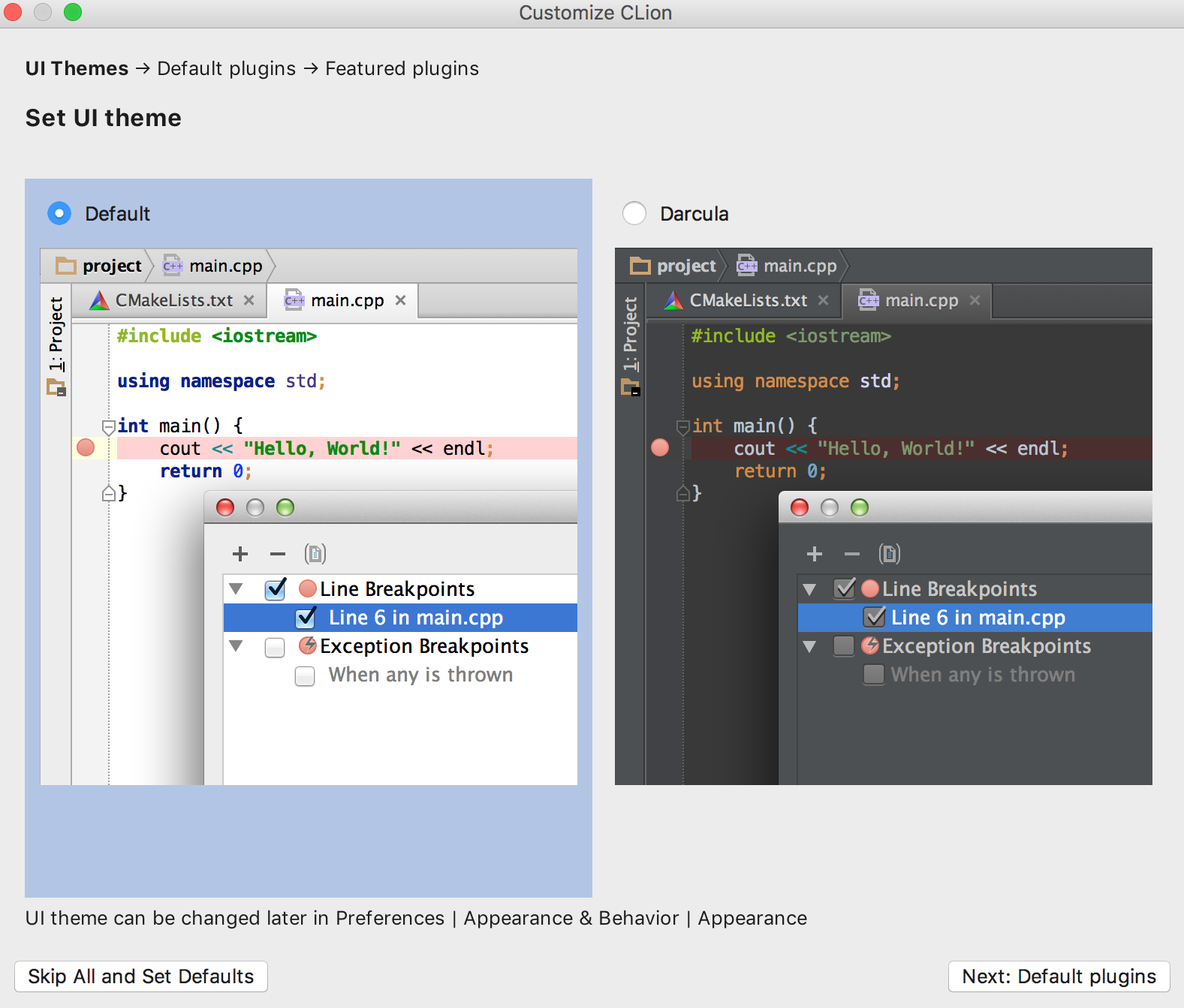
Configuring Toolchains
On this stage, specify your preferred environment, CMake and GDB executables.
Select the proper installation and make sure there are no red exclamation marks. Refer to toolchains configuration manual and reference information for direct instructions.
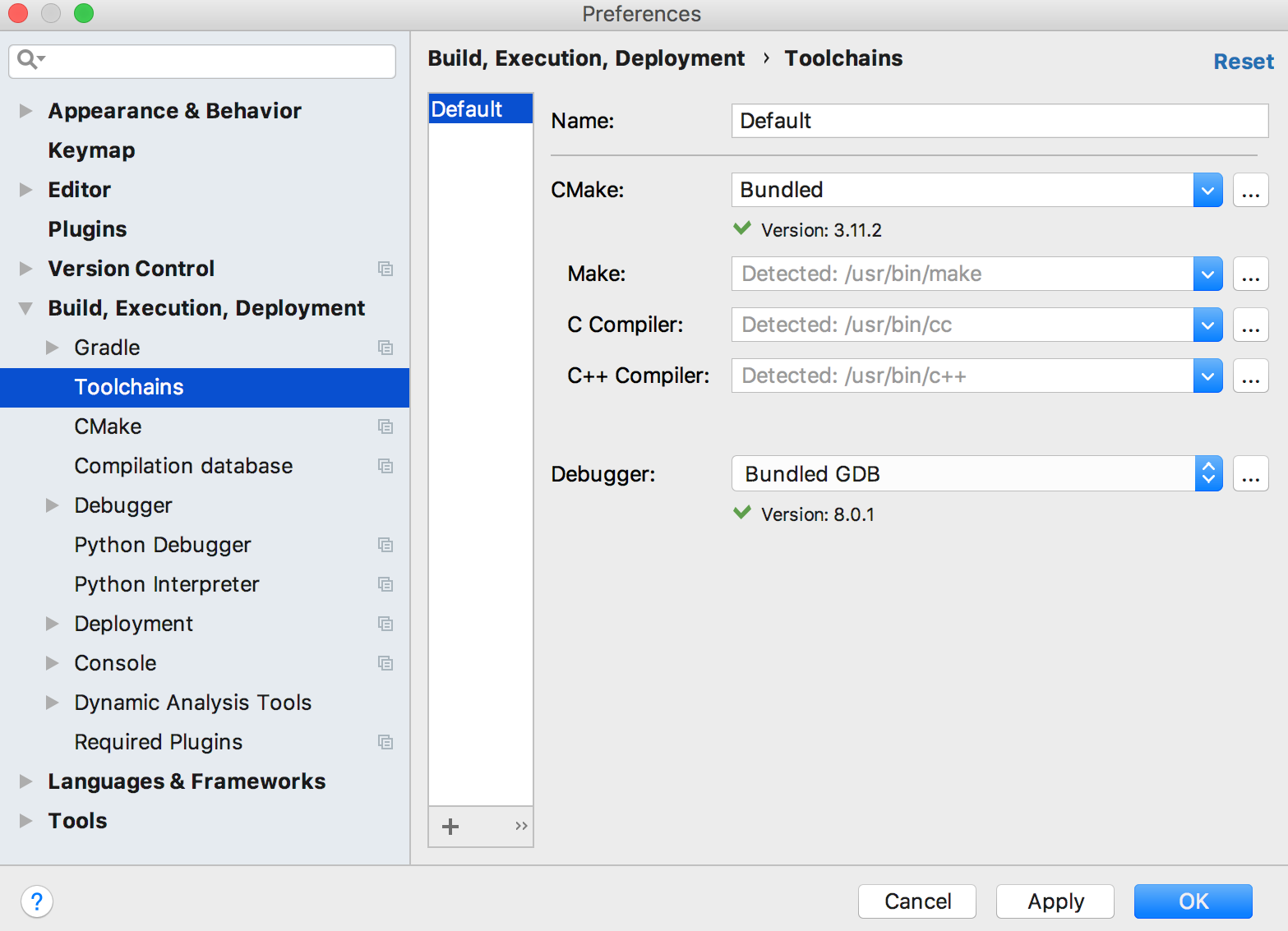
When ready, click Apply.
If a certain component (compiler, GDB, etc.) is missing, CLion shows a corresponding error: 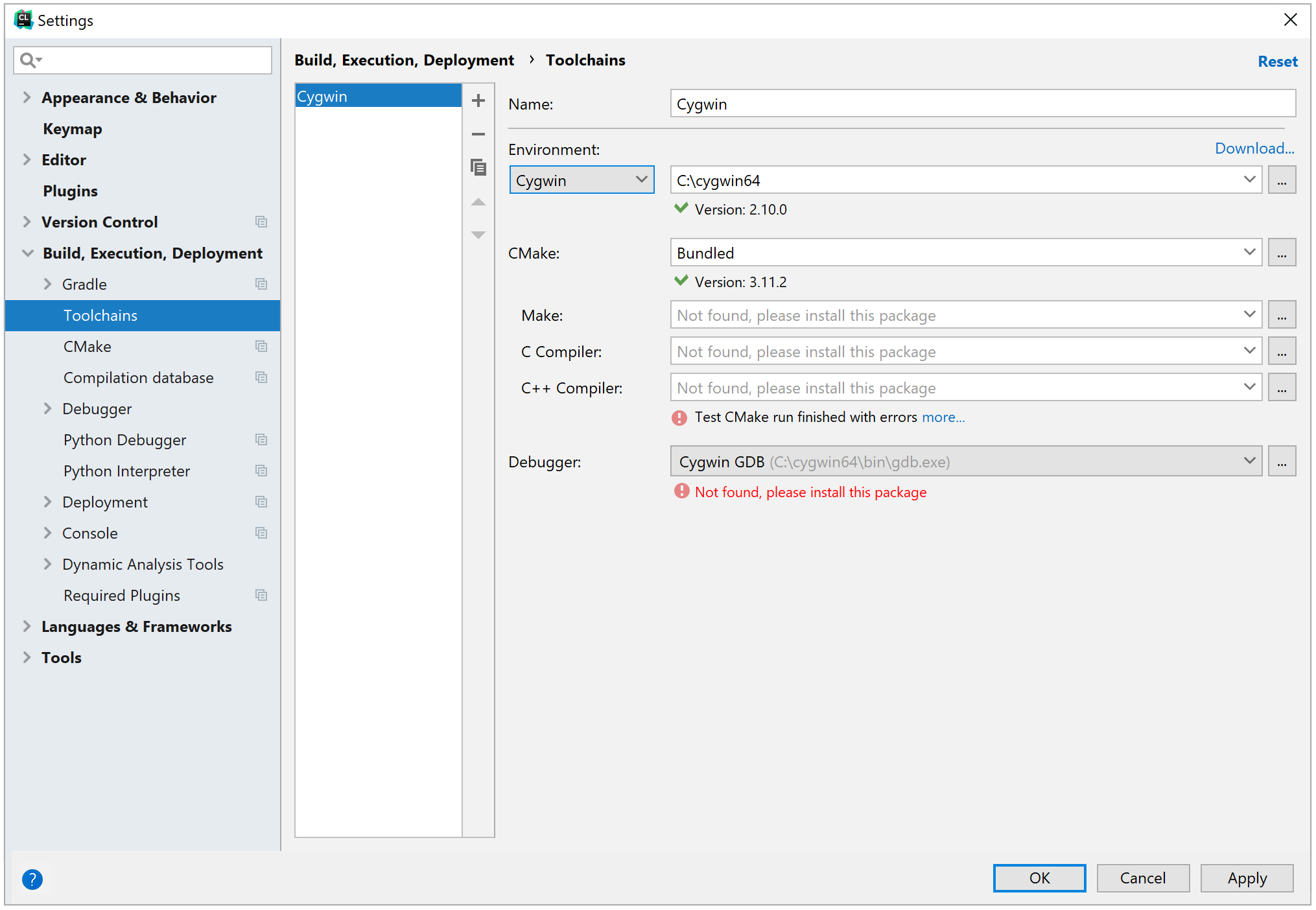
Note that Apply button is still available; however, you might have problems while creating or opening without properly a configured toolchain. You can configure toolchain anytime later.
Disable the unnecessary plugins
CLion is shipped with a variety of plugins that provide integration with different version control systems and application servers, add support for various frameworks and development technologies, etc.
On the next step you can disable the plugins you do not need to increase CLion performance. If necessary, you can re-enable them later in the Settings dialog ( Ctrl+Alt+S under Plugins).
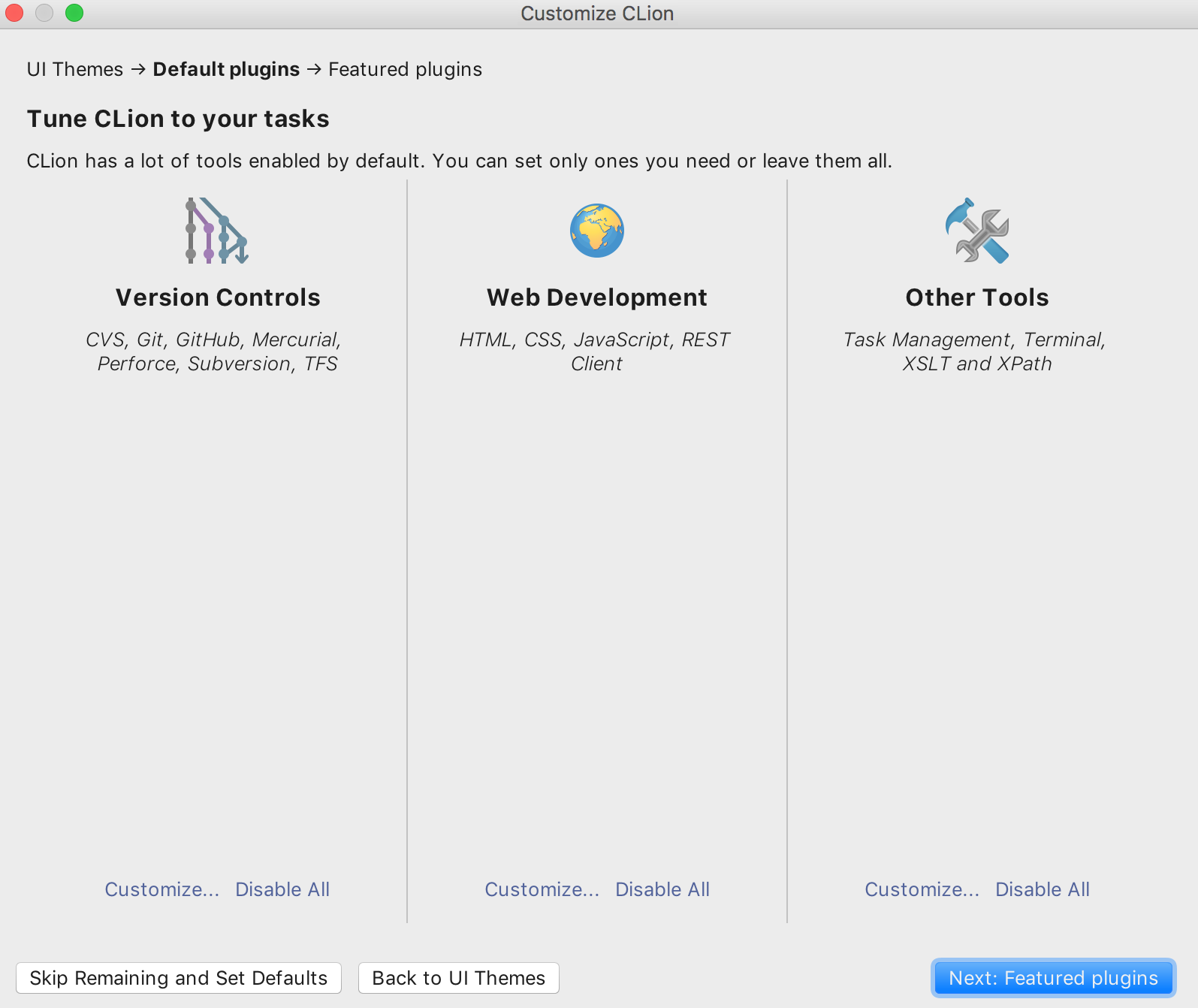
You can click the Disable All link for each group of plugins to disable them all, or Customize to disable individual plugins.
Download and install additional plugins
On the next step, you are prompted to download additional plugins that are not bundled with the IDE from the CLion plugins repository:
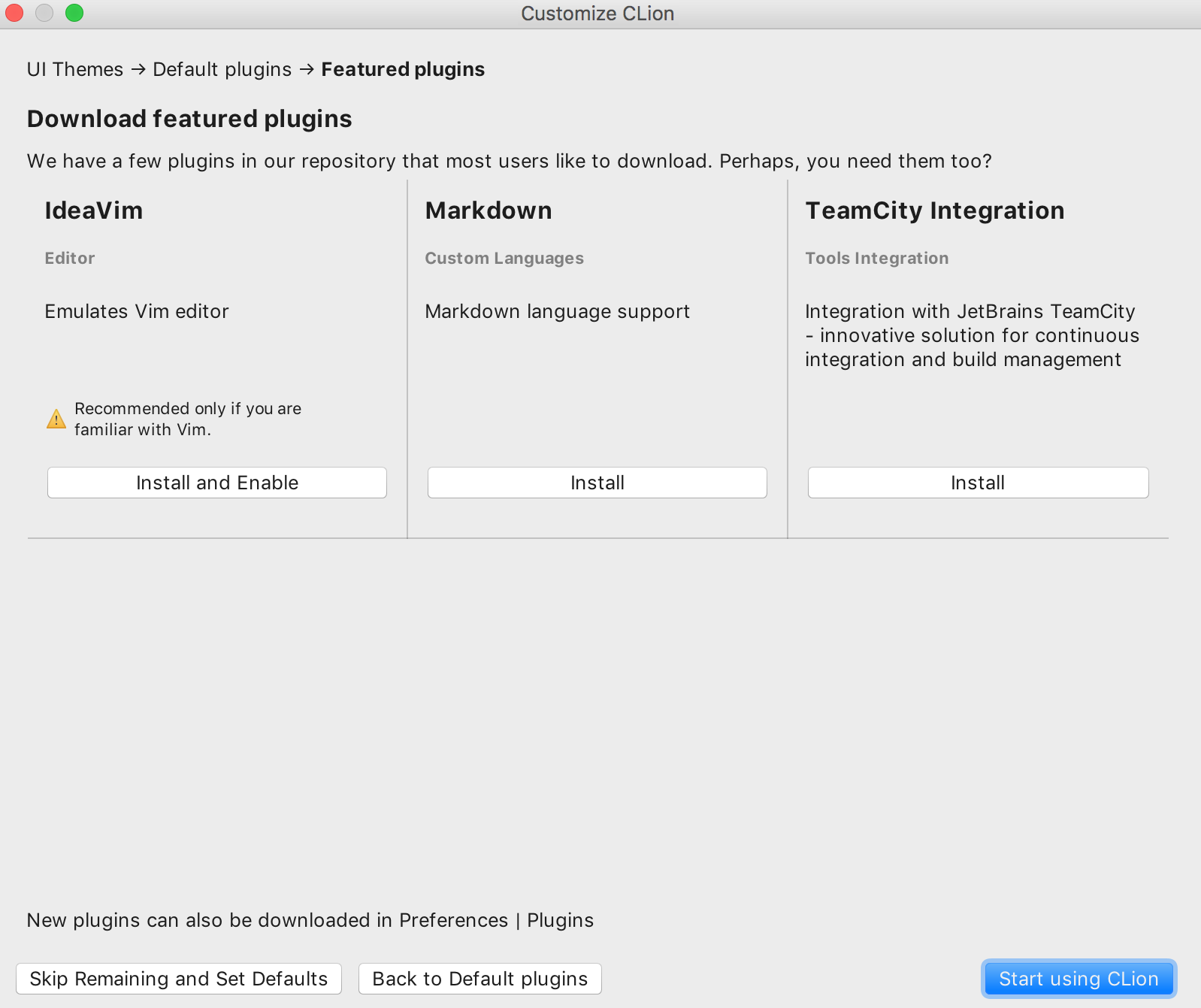
Start a project in CLion
After you have completed initial CLion configuration, the Welcome screen will be displayed. It allows you to:
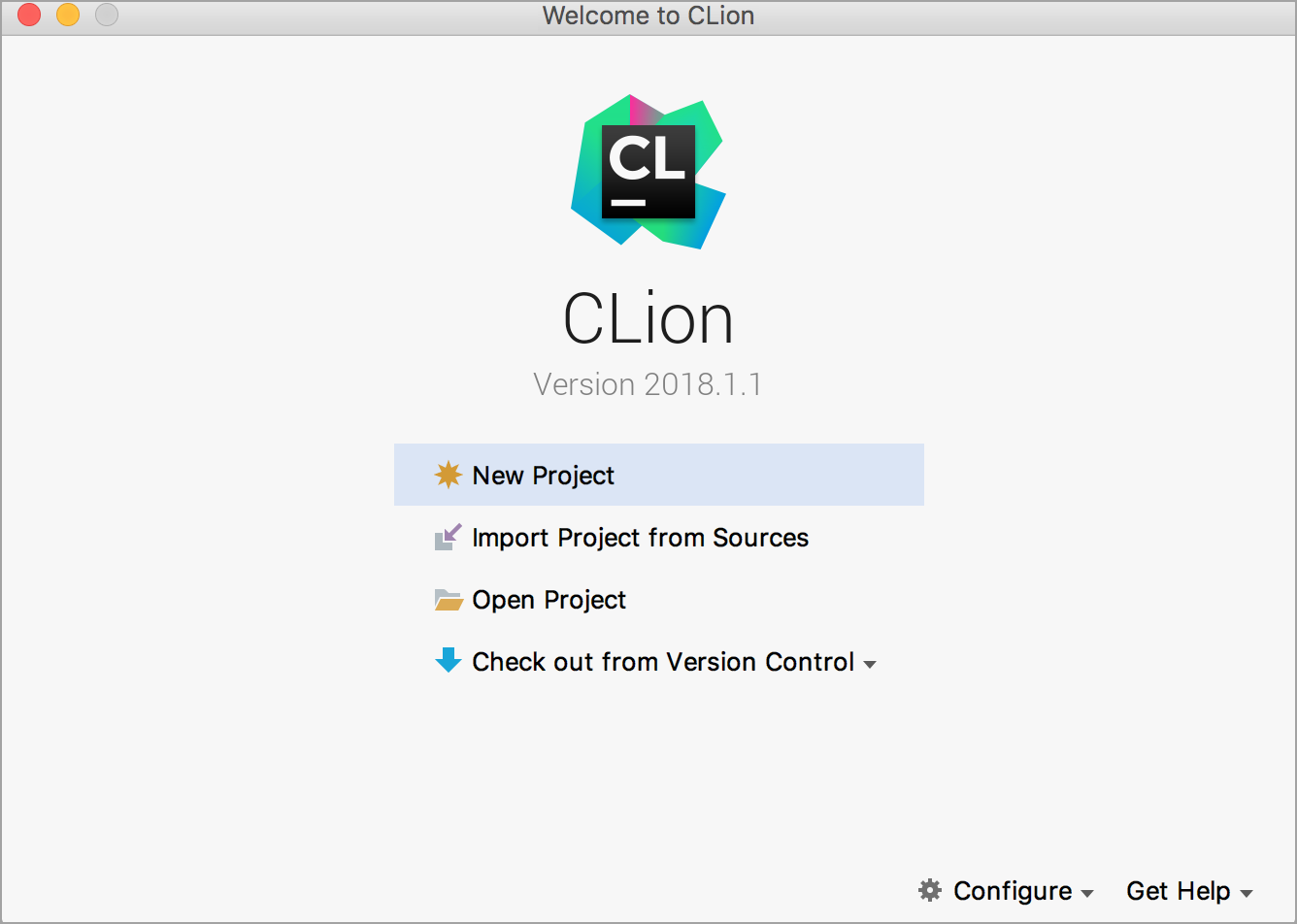
Register CLion
To try and evaluate CLion, you can download and install its trial version for free. The trial version is available for 30 days, whereupon you need to obtain and register a license.
- Do one of the following:
On the Welcome screen, click Configure | Manage License
Select Help | Register from the main menu
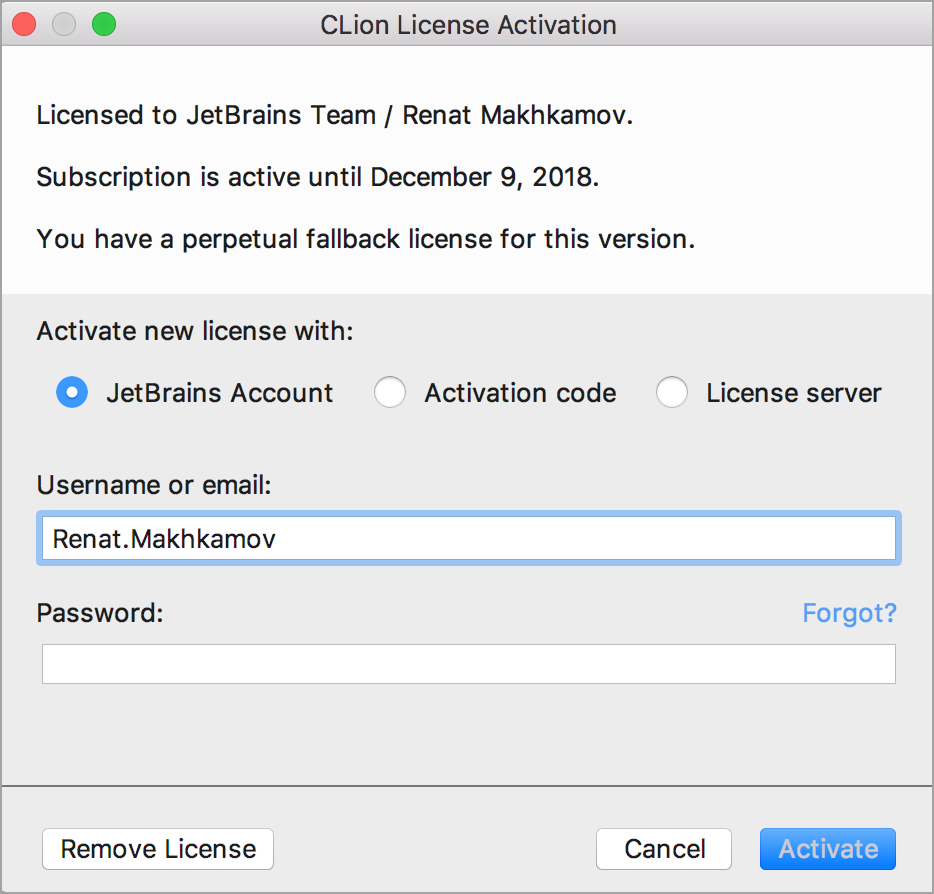
- Select how you want to register CLion:
JetBrains Account: select this option if you have a JetBrains Account that allows you to access your purchases and manage licenses (see What is JetBrains Account? to learn more).
Activation code: select this option if you have an activation code for CLion, and paste it to the text area.
-
License server: select this option to register CLion through the License Server web application that allows you to manage floating licenses and issue licenses to users who do not have direct internet access.
To override the URL of the system proxy during initial CLion startup, use the
-Djba.http.proxyproperty, which can be added as a JVM option.When performing silent install or managing CLion installations on multiple machines, you can set the
JETBRAINS_LICENSE_SERVERenvironment variable to point the installation to the license server URL.
Update CLion
the latest version of CLion.
Launch the setup as described in Download and install CLion.
Choose whether you want to uninstall the existing CLion version together with its settings, caches and local history and follow the instructions of the installation wizard.
Manage CLion through Toolbox App
Toolbox App is a control panel that allows you to manage all JetBrains developer tools, including CLion, as well as your projects, from a single point of access. It lets you launch the IDEs, maintain different versions of the same tool, install updates and roll them back if needed. It also remembers your JetBrains Account and uses it to automatically log you in when you install and register new tools.
Launch the setup file.
When the installation is complete, accept the JetBrains privacy policy and sign in to your JetBrains Account.
Now you can manage existing tools, install new tools, and download updates:
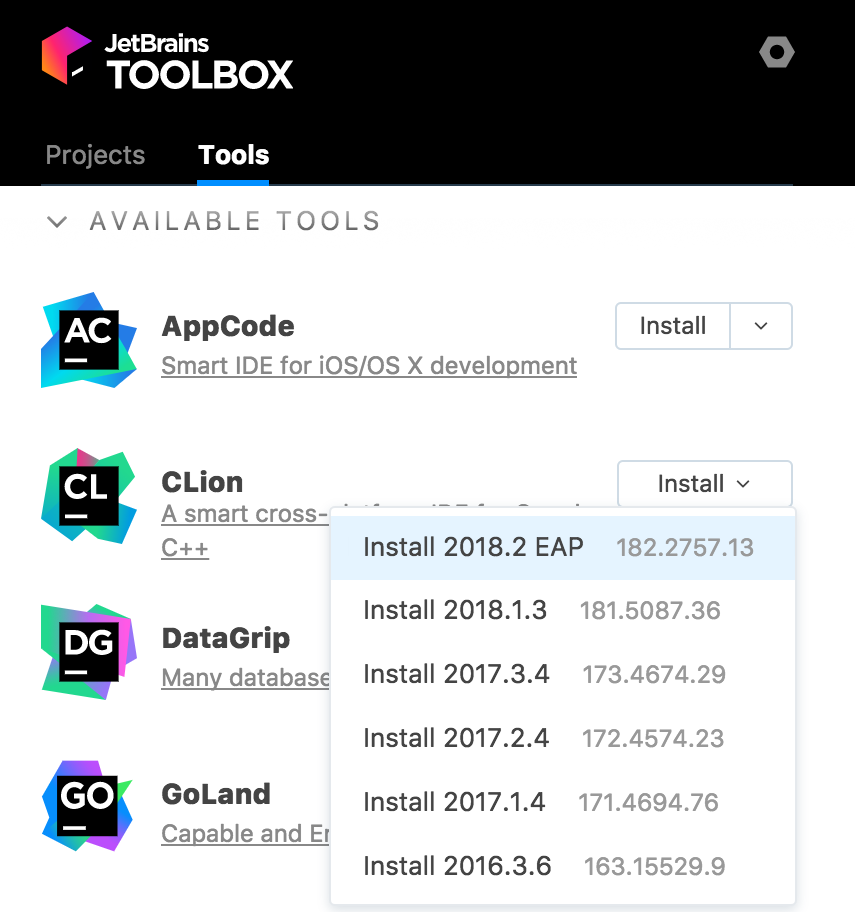
Perform silent installation on Windows
Silent installation is performed without any user interface. It can be used by network administrators to install CLion on a number of machines and avoid interrupting other users.
To perform silent install, run the installer with the following switches:
-
/S: Enable silent install -
/D: Specify the path to the installation directory -
/CONFIG: Specify the path to the silent configuration file
For example:
CLion.exe /S /CONFIG=d:\temp\silent.config /D=d:\IDE\CLionSilent configuration file
You can download the silent configuration file for CLion at https://download.jetbrains.com/cpp/silent.config
The silent configuration file defines options for installing CLion. With default options, silent installation is performed only for the current user (mode=user). If you want to install CLion for all users, open the silent configuration file with a text editor, change the value of the installation mode option (mode=admin) and run the installer as an administrator.
Uninstall CLion silently
To silently uninstall CLion, run the uninstaller with the /S switch as an administrator. The uninstaller is located in the installation directory under bin.
Run cmd (Windows Command Prompt) as administrator, change to the CLion installation directory, and run the following:
bin\uninstall.exe /SInstall CLion as a snap package on Linux
You can install CLion on Linux as a self-contained snap package. Since snaps update automatically, your CLion installation will always be up-to-date.
CLion is distributed via two channels:
-
The stable channel includes only stable versions. To install the latest stable release of CLion, run the following command:
$ sudo snap install clion --classic -
The edge channel includes EAP builds. To install the latest EAP build of CLion, run the following command:
$ sudo snap install clion --classic --edge
When the snap is installed, you can launch it by running the clion.sh command.
To list all installed snaps, run sudo snap list. For more information, see the Snapcraft documentation.